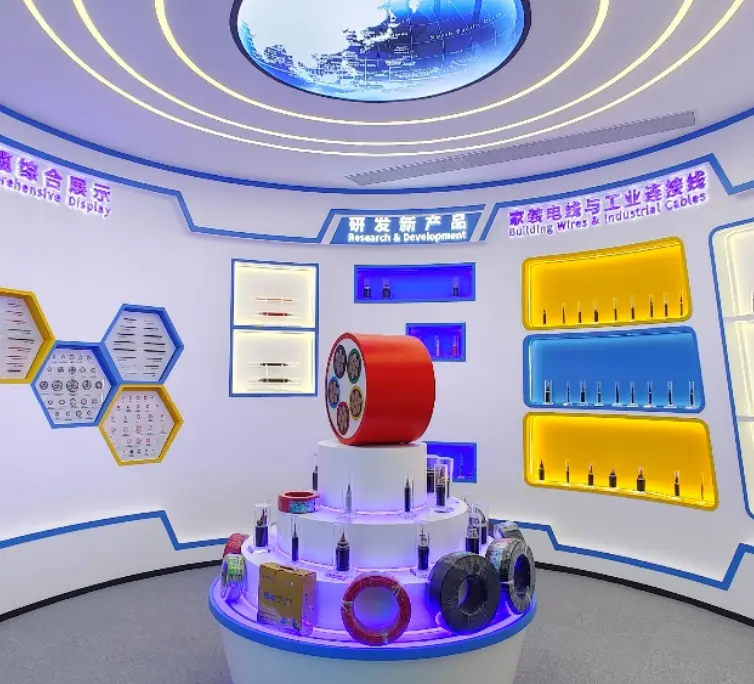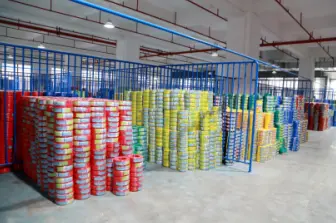How to Select PVC Electrical Cables?
PVC electrical cable refers to cables where the outermost material wrapping the core is made of polyvinyl chloride (PVC). In a sense, it is also an insulated wire. PVC electrical cable material is composed of polyvinyl chloride resin, stabilizers, plasticizers, fillers, lubricants, antioxidants, colorants, etc. Polyvinyl chloride is a polymer made by polymerizing vinyl chloride monomer in the presence of initiators such as peroxides and azo compounds, or under the action of light and heat, following the free radical polymerization mechanism. Vinyl chloride homopolymers and vinyl chloride copolymers are collectively referred to as vinyl chloride resins.
PVC was once the world's most produced general-purpose plastic. PVC material has superior physical properties and good flame retardancy, and it is widely used. It is broadly applied in building materials, industrial products, daily necessities, floor leather, floor tiles, artificial leather, pipes, wires and cables, packaging films, bottles, foam materials, sealing materials, fibers, etc. Many excellent protective properties of PVC can protect the inside of wires and cables very well. For example, PVC is not easy to burn, is aging-resistant, chemical-resistant, impact-resistant, simple in structure, tensile, wear-resistant, waterproof, oil-resistant, flame-retardant, has high tensile strength, and tear resistance. These characteristics make it have excellent insulation effects and protective functions, so PVC material is often used as the insulation material for general wires and cables.
PVC electrical cables can be used in dry and humid indoor environments. They are particularly suitable for tool processing, mechanical industry, and the measurement and control parts of electronics and computers. They can be applied under moderate mechanical stress and can move freely without tensile stress. The selection of PVC electrical cables must be done with care. Here are the precautions for selecting PVC electrical cables.
Check the PVC material
The quality of PVC electrical cables is closely related to the quality of the PVC material used. Some unscrupulous cable manufacturers often choose inferior PVC materials or cut corners to reduce costs, leading to substandard cable quality. Although judging the quality of PVC materials requires certain professional knowledge, we can still preliminarily assess the quality of the cable from the following aspects: First, observe whether the insulation layer of the cable is even and if there are any defects or bubbles; second, check whether the thickness of the insulation layer meets the standard, as a too-thin insulation layer often means poor protective ability of the cable, making it susceptible to external environmental influences. High-quality PVC material should have good heat resistance, corrosion resistance, and aging resistance.
Check the length and wire gauge
According to national standards, the length and wire gauge of PVC electrical cables are strictly regulated. For example, a 2.5 square millimeter BV cable should have a standard length of 100 meters and a wire gauge of 1.78 millimeters. If, during selection, you find that the actual length of the cable differs from the marked length by more than 1 meter, or the wire gauge does not meet the standard, it indicates a quality issue with the cable. By measuring the length and wire gauge of the cable, we can preliminarily judge whether the cable meets national standards, thereby avoiding purchasing substandard cables.
Check the quality of copper
Copper is the main conductive material for most cables, and its quality directly affects the electrical performance and durability of the cable. High-quality copper usually has a reddish-purple color, not yellow or dark, and is relatively soft. The copper surface should be smooth and free of oxidation layers. If the copper surface shows obvious oxidation, it indicates low copper purity, which may lead to poor conductivity and even overheating, affecting the cable's lifespan. When purchasing, a simple visual inspection can help evaluate the quality of the copper. High-quality copper not only provides excellent electrical conductivity but also effectively extends the cable's service life.
Check the protection rating of the cable
The protection rating required for PVC electrical cables varies depending on the environment in which they are used. For cables exposed to external environments and possibly subject to moisture and mechanical impact, cables with a higher protection rating should be chosen. For example, cables rated IP65 and above can effectively prevent water and dust ingress, ensuring normal operation in harsh environments. For ordinary indoor use, cables with lower IP ratings are sufficient. When selecting, confirm whether the cable has a clear protection rating marking and choose the appropriate protection rating based on the usage scenario.
Latest News & Blog
 English
English  français
français  Deutsch
Deutsch  العربية
العربية  tiếng việt
tiếng việt  ไทย
ไทย  čeština
čeština  Indonesia
Indonesia  Eesti
Eesti  български
български  slovenčina
slovenčina 



